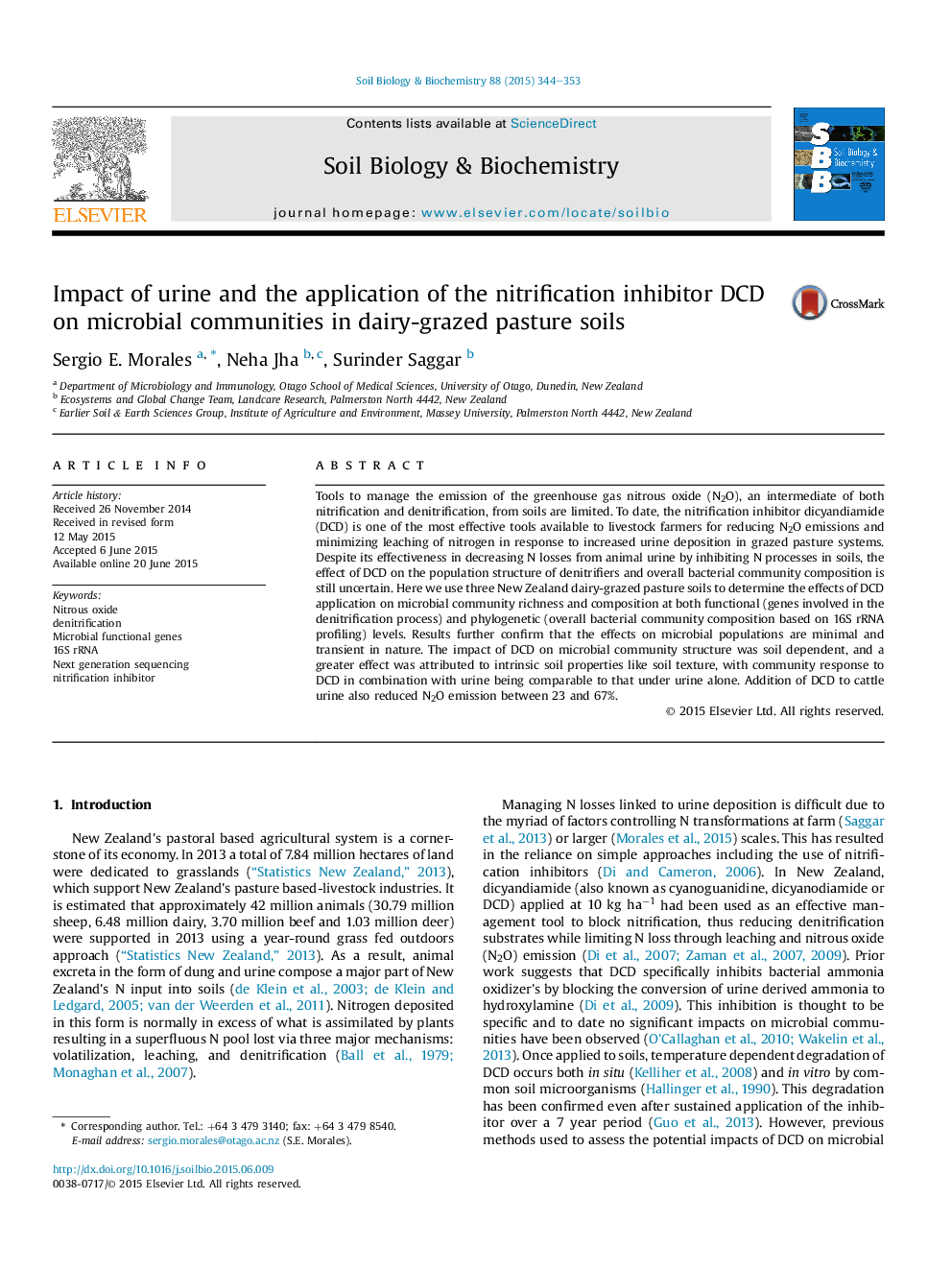| Article ID | Journal | Published Year | Pages | File Type |
|---|---|---|---|---|
| 8364070 | Soil Biology and Biochemistry | 2015 | 10 Pages |
Abstract
Tools to manage the emission of the greenhouse gas nitrous oxide (N2O), an intermediate of both nitrification and denitrification, from soils are limited. To date, the nitrification inhibitor dicyandiamide (DCD) is one of the most effective tools available to livestock farmers for reducing N2O emissions and minimizing leaching of nitrogen in response to increased urine deposition in grazed pasture systems. Despite its effectiveness in decreasing N losses from animal urine by inhibiting N processes in soils, the effect of DCD on the population structure of denitrifiers and overall bacterial community composition is still uncertain. Here we use three New Zealand dairy-grazed pasture soils to determine the effects of DCD application on microbial community richness and composition at both functional (genes involved in the denitrification process) and phylogenetic (overall bacterial community composition based on 16S rRNA profiling) levels. Results further confirm that the effects on microbial populations are minimal and transient in nature. The impact of DCD on microbial community structure was soil dependent, and a greater effect was attributed to intrinsic soil properties like soil texture, with community response to DCD in combination with urine being comparable to that under urine alone. Addition of DCD to cattle urine also reduced N2O emission between 23 and 67%.
Related Topics
Life Sciences
Agricultural and Biological Sciences
Soil Science
Authors
Sergio E. Morales, Neha Jha, Surinder Saggar,
